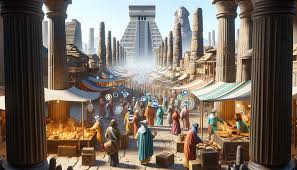VR for Historical Reenactments
Experiencing Key Moments in History
VR for Historical Reenactments: Experiencing Key Moments in History
VR for Historical Reenactments
Virtual reality (VR) is changing the way we experience history. With VR technology, we can now step back in time and see historical events as they happened. This is especially exciting for historical reenactors, who can use VR to create more immersive and realistic experiences.
VR can be used to create realistic environments that simulate historical settings. For example, a VR reenactment of the Battle of Gettysburg could allow participants to experience the battle from the perspective of a soldier. VR can be used to create realistic environments that simulate historical settings. This could include a battlefield with the sounds of cannon fire and the shouts of soldiers or a historical town square with the sights and sounds of everyday life. VR can also be used to create realistic representations of historical figures. For example, a VR reenactment of the signing of the Declaration of Independence could allow participants to see and interact with the Founding Fathers.
Experiencing Key Moments in History
One of the most exciting applications of VR for historical reenactors is the ability to experience key moments in history. For example, VR can be used to recreate the signing of the Declaration of Independence or the assassination of Abraham Lincoln. VR can also be used to create immersive experiences that allow participants to learn about historical events in a fun and engaging way. For example, a VR reenactment of the Great Fire of London could allow participants to experience the fire firsthand and see the devastation it caused. VR can also be used to teach about historical events in a way that is more engaging than traditional methods.
Overall, VR is a powerful tool that can be used to enhance historical reenactments and provide a more immersive and educational experience for participants. VR can also be used to create realistic environments that simulate historical settings, create realistic representations of historical figures, and allow participants to experience key moments in history firsthand.
- VR is changing the way we experience history.
- VR can be used to create realistic environments that simulate historical settings.
- VR can be used to create realistic representations of historical figures.
- VR can be used to experience key moments in history.
- VR can be used to teach about historical events in a more engaging way.
